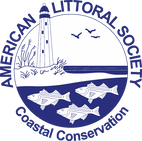|
The American Littoral Society promotes the study and conservation of marine life and habitat, protects the coast from harm, and empowers others to do the same.
Since 1961 we have empowered people to care for the coast through advocacy, conservation, and education. We not only provide a voice for the coast, but also give concerned citizens the knowledge and tools they need to raise their voices with us. When we restore habitat, our objective is not only to restore a dune or rebuild an oyster reef, but also to motivate people to invest “sweat equity” into a piece of the coast, take ownership and become committed stewards. When we educate, we don’t merely provide books, CDs, or handouts. We lead students young and old into the water to get their feet wet and their hands muddy. Sitting at a computer or reading a book, people may develop an interest in the coast; standing knee deep in sea foam with sand between their toes, they will develop a passion for the coast. |
Littoral Spotlight:
Cape Ann Whale Watch Weekend

Join the Littoral Society for an extended weekend in the lovely town of Gloucester, MA on the Cape Ann peninsula (map) for a whale watch weekend.
The weekend includes three nights lodging in historic Gloucester, Massachusetts, a ½-day Whale Watch trip, an evening cruise on the Essex River, easy canoeing trip on the scenic Ipswich River, a hike along the shoreline at Halibut Point State Park, plus a lobster/seafood dinner.
The trip will be led by Littoral Society naturalists Don Riepe and Alexandra Kanonik.
Find more information and register on our website.
The weekend includes three nights lodging in historic Gloucester, Massachusetts, a ½-day Whale Watch trip, an evening cruise on the Essex River, easy canoeing trip on the scenic Ipswich River, a hike along the shoreline at Halibut Point State Park, plus a lobster/seafood dinner.
The trip will be led by Littoral Society naturalists Don Riepe and Alexandra Kanonik.
Find more information and register on our website.
Event Spotlight:
Moth Night on Sandy Hook

Friday, July 26, 2024
8 - 10 p.m.
Meet at the Fishing Beach
(End of Area F Road)
Gateway National Recreation Area
Sandy Hook Unit
Highlands, NJ
$20 for members
$30 for nonmembers
Celebrate National Moth Week with the Littoral Society and learn about these incredible nocturnal creatures! We will join moth expert Blaine Rothauser, Senior Ecologist, GZA GeoEnvironmental, Inc., for a hands-on, interactive session to observe the process of identifying moths, while also learning so much more about them like why they are important to our environment and what you can do to support our moths found in New Jersey.
This group session will provide many opportunities to ask questions and to be guided through your own discoveries. Whether you are brand new to the world of moths or have an already established love for them, this session is for you.
Dress for the weather and bring a headlamp or flashlight. Bring a camera to take some awesome close-up shots! You will be surprised by their individual and breathtaking features.
8 - 10 p.m.
Meet at the Fishing Beach
(End of Area F Road)
Gateway National Recreation Area
Sandy Hook Unit
Highlands, NJ
$20 for members
$30 for nonmembers
Celebrate National Moth Week with the Littoral Society and learn about these incredible nocturnal creatures! We will join moth expert Blaine Rothauser, Senior Ecologist, GZA GeoEnvironmental, Inc., for a hands-on, interactive session to observe the process of identifying moths, while also learning so much more about them like why they are important to our environment and what you can do to support our moths found in New Jersey.
This group session will provide many opportunities to ask questions and to be guided through your own discoveries. Whether you are brand new to the world of moths or have an already established love for them, this session is for you.
Dress for the weather and bring a headlamp or flashlight. Bring a camera to take some awesome close-up shots! You will be surprised by their individual and breathtaking features.



